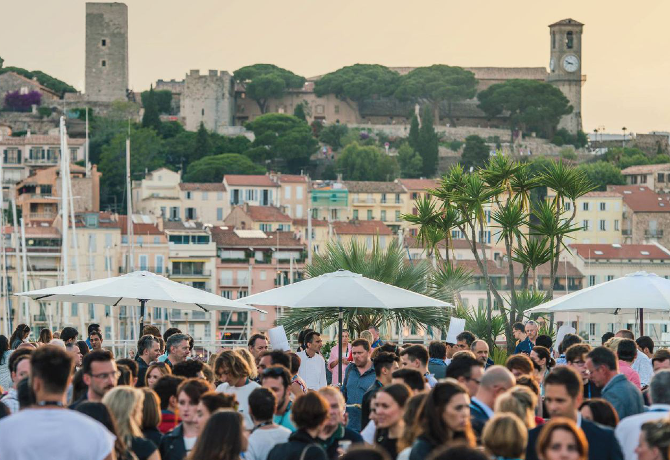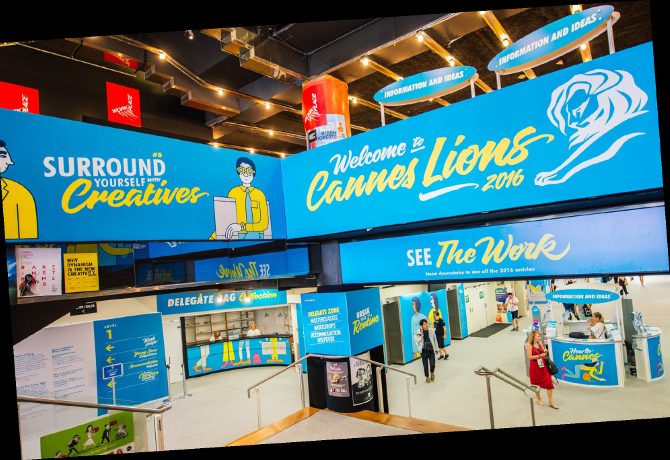Oh, I say, “thank you creativity.” Fear not – you are not about to be subjected to some tuneless tribute to Swedish pop gods ABBA. Instead, it is worth reflecting on the scarcely concealed attempt at reassurance behind Cannes Lions 2016’s somewhat cloying strapline.
The traditional advertising agencies that have been coming to Cannes for decades, and continue to enter the festival’s awards en masse, feel increasingly resentful that their private, sun-kissed celebration of marketing creativity has been hijacked by brash technology and media salesmen in search of a quick buck.
The scale of investment by the media industry in Cannes is admittedly staggering. From the giant beach venues housing Google and Facebook, to the succession of ad tech-occupied yachts – not to mention the MailOnline’s vast battleship at the end of the Old Port – companies have become desperate to offer the best parties and most glamorous celebrity guests.
But, beyond the bling, is it also a sign that creativity is changing, and that these perceived imposters have a worthwhile contribution to make?
Kathleen Hall, corporate vicepresident for global advertising and media at Microsoft, has witnessed the change first-hand, having started her career at Young & Rubicam before moving client-side. She believes the idea of ownership of creativity is defunct in today’s market.
“I’m old enough to say I’ve lived through the transition, from when everybody was together – you had creative, media, data and insights in one agency – and then it all disaggregated, and now it feels like it’s all coming back together again, which I think is a great thing,” says Hall.
“It is divided, but while I’ve been [in Cannes] talking to Twitter or Instagram, you can’t speak of the medium, the measurement alone without the creative involved. It’s the intersection of those three that is going to make something amazing.”
Unilever’s Aline Santos, executive vice-president for global marketing at the FMCG giant, argues that creativity in marketing is not a static concept, and instead must evolve to match the preferences and behaviours of consumers.
“One of the most important phenomena we are facing today is the change in terms of the consumer journey,” says Santos. “In the past, consumer journeys were very linear, and it was very easy to create awareness and to convince people to buy our products.
“Today, the journeys are much more complex. There are zillions of touchpoints everywhere. To build equity today is one of the most challenging questions you can ask of a marketer. Part of the answer is to understand where your consumer is, and how you can contextualise your message,” she adds. Take an example like online video.
The rising need for ‘silent video’ was a repeated theme in Cannes this year, with many experts – including Social@Ogilvy global managing director Thomas Crampton – pointing out that many consumers will encounter video in the workplace or in public, where audio is not possible, meaning that the narrative style must be adapted accordingly.
Distribution is becoming central to the question of creativity, agrees Jon Gittings, chief strategy officer for the Americas at MediaCom.
“There’s a reason we call ourselves a ‘content and connections’ agency, and it’s not because we want to make the ads. We are now at a point where you truly cannot take one away from the other, and to really understand how to build the content you really have to understand how that content is ultimately going to be distributed,” says Gittings.
“What we still see far too much of is print ads repurposed in Instagram feeds, for example. That is a very cheap, easy shot, but that type of behaviour still goes on far too much.
No one agency really takes ownership of it, but whoever is making the content and whoever is building the distribution system needs to be working closer than ever.”
DYNAMIC CREATIVE
Many purists consider technology to be anathema to the premise of human creativity, and believe it only distracts from those moments of private and collective inspiration behind the best marketing campaigns. However, a growing counter-argument is building in favour of the idea of data enhancing creativity, making personalisation more possible.
“We’re really trying to stress that there is data that we can use and share with our advertisers to help them be smarter about what kind of creative
they should be running,” says Tim Mahlman, the newly appointed global president at AOL Platforms.
“If you think back to what Cannes was, it was a celebration of the creative side within the agencies, but I think creative is now held mutually accountable to creative shops but also the companies they partner with.”
This is resoundingly echoed by Slavi Samardzija, global chief executive officer of Omnicom Media Group’s data and analytics arm Annalect.
“What is very unique about this new type of data is that it is very behavioural. It is very rich in texture, and gives us a huge opportunity to unlock the strategic insights. As an industry, we have focused more on the tactical application of data, but the data has the richness to be able to drive those strategic and transformational ideas for our clients,” says Samardzija.
The concept of ‘dynamic creative’– using audience data to amend and tailor ads – was a popular subject on the Croisette, as explained by Xaxis APAC chief executive Michel de Rijk: “We now have the ability to give that feedback earlier into the creative process, and make these adjustments during a campaign.
“That is one of the things we haven’t done proactively enough in the industry. We used to create a set of creatives and shoot them over to the media agency, and they would just let it go.”
Another form of technology exciting those with an eye on the next big thing is virtual reality (VR). A flurry of VRrelated buzzwords – from ‘mixed reality’ to 360 video – dominated conversations between publishers and agencies, and brands are getting ready to dip their toes into this new form of media.
Google’s EMEA director of brand innovation Debbie Weinstein tells M&M Global: “We’re incredibly excited about VR. It’s the ultimate expression of telling immersive stories […] and what is exciting about it now is that it is starting to get the reach and the scale, as well as delivering that impact.”
Weinstein points out recent projects by car marques such as BMW and Volvo to allow consumers to not only watch the “windy turn down the mountain” but also feel a physical part of that experience.
‘BOUNDED CREATIVITY’
An altogether more drastic question – and more troubling for some – is that of the growing prominence of artificial intelligence (AI).
That technology and data can enhance creativity is growing in credence; but could machines one day entirely replace people in the creative process? There were no shortage of experts on hand to ask about AI, including Martin Ford, author of oft-cited book Rise of the Robots: Technology and the Threat of a Jobless Future. Ford believes this advanced form of automation will have a “significant impact” on the advertising industry as we know it, especially for more basic forms of creativity within templates.
“Most people say that creativity is something that is uniquely human, and that it ought to be safe. Yet, within advertising, there are many good examples of what you might call ‘bounded creativity’ – creativity that has clearly defined boundaries – and within those boundaries we are seeing algorithms that can undertake creative takes,” says Ford.
“They can generate untold combinations of elements, and then test that against actual data to see how people are responding to that. And that is something that a person could obviously never do, but a machine can.”
However, before we all flee to the hills in panic about malevolent AI creatures stalking the streets of Cannes, Kevin Kelly – the co-founder of Wired and a respected technology expert – insists that brands and agencies should not be afraid of “making things smarter […] in a different way than humans are smart”.
“AIs think differently from us,” says Kelly. “We’ve been hearing a lot about AI, and there is a tendency to think of it in a cinematic Hollywood sense of a being that is like a human, but maybe even superhuman, and that is then going to kill us. We need to get that idea out of our heads. It is a little more boring, in a sense, and a little more fundamental.
“There will be certain roles and jobs that will disappear, but there will be far more new roles and jobs created that we find difficult to imagine right now.
That will be generated by the bots and AIs enabling us to do things we haven’t done before.” There may be little agreement on the future of creativity, but all the evidence indicates that the old world of ad agency ownership of the creative process is fading from view. The next time Cannes Lions chooses to say ‘thank you’ to creativity, it may be expressing its gratitude to data sets, algorithms and AI bots, as well as those clever people clinking glasses of rosé in the sunshine.











